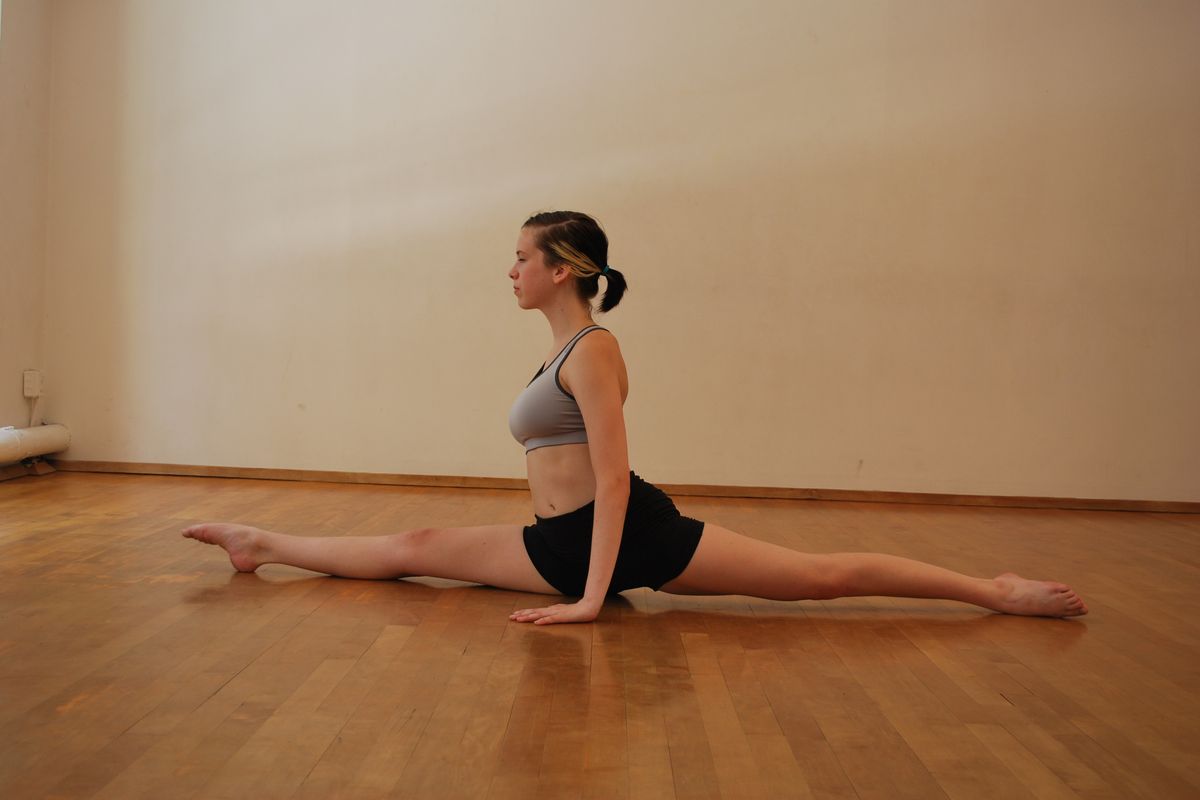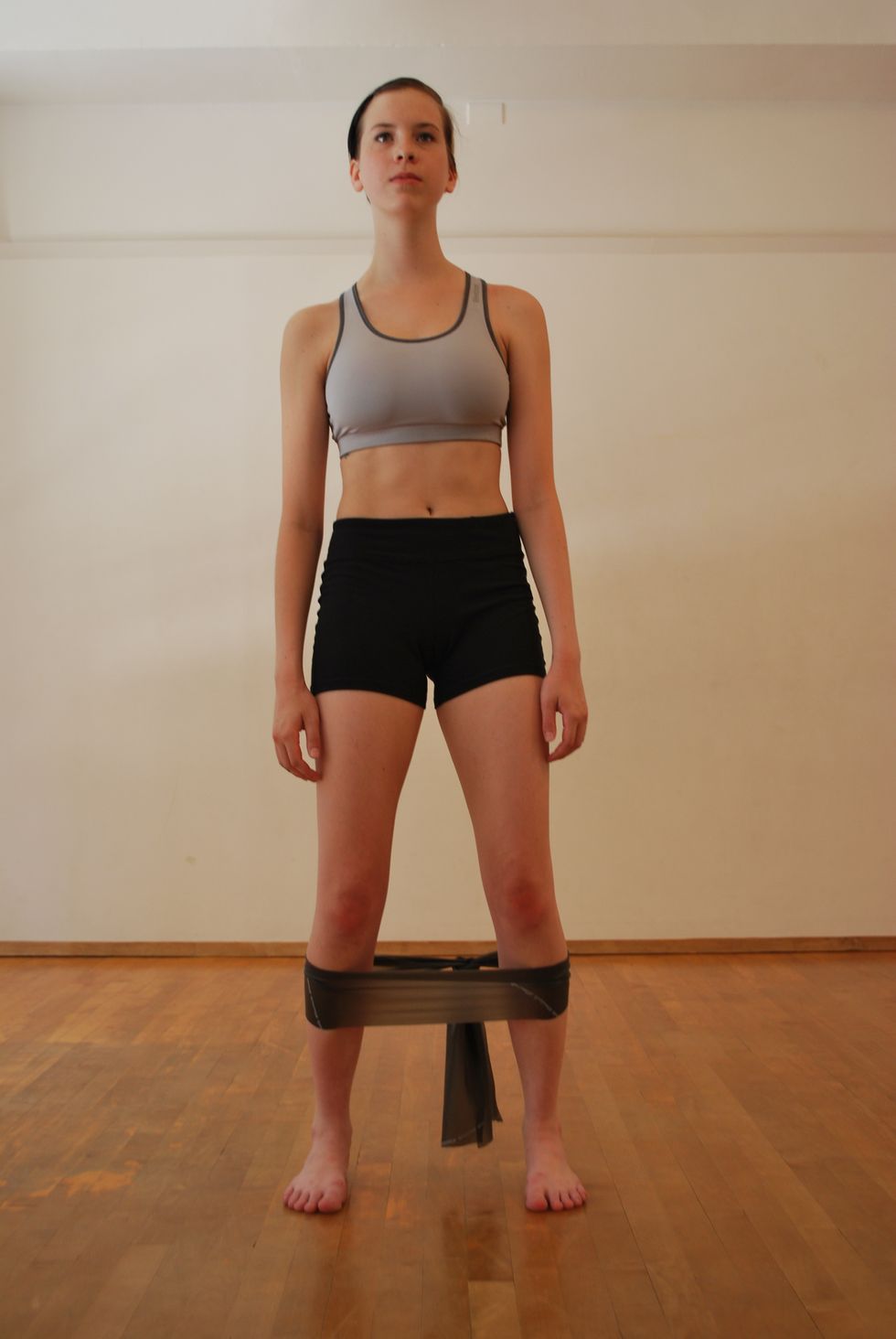
There is a flexibility freak show going on in the dance world. Between out-of-this-world extensions on “So You Think You Can Dance” and a boundaries-pushing contemporary scene, it seems the bar for bendiness gets higher every year.
Have the standards gotten out of control? The truth is it depends on the body. “Some people are genetically predisposed to that kind of flexibility,” says Leigh Heflin of Harkness Center for Dance Injuries at NYU Langone Medical Center.
There are genetic factors that limit how flexible any dancer can become, no matter how much she stretches. But many dancers will do anything to increase their flexibility, sometimes turning to extreme stretching practices that risk injury and even their careers. Fortunately, there are safe ways for students to reach their potential and get the dazzling elastic moves they’re striving for.
There are a few classic ways dancers are inclined to stretch incorrectly. First, they may try to progress too quickly, which can strain or sprain ligaments, tendons or muscles. Dancers need to gradually increase stress on muscles so they have time to adapt, says Heflin. “You have to progressively overload that capacity on your muscle,” she says. “Increase tension and stretch every week. You can’t expect to be there right away.”
And warming up before stretching is essential. Heflin says if you’re stretching a cold muscle, or stretching for so long that muscles get cold, you actually end up stretching the joint instead. This can cause instability that will affect your strength and ability to execute quick movements and jumps.
Perhaps most importantly, strength building should go hand in hand with stretching. Few dancers are strong enough to achieve their maximum flexibility without a big battement to kick the leg up. Heflin says focusing on strength can benefit your functional flexibility more than anything else. “Flexibility is that length in the muscle that we all want to achieve,” she says, “but functional flexibility is having the muscular support and the joint stability to hold that position.”
Tips for proper stretching
from the Harkness Center’s Leigh Heflin
Warm up for 5 to 10 minutes before stretching for class. Try jogging in place or doing jumping jacks.
Before class, do not hold a stretch longer than 15 seconds.
After class is when you will gain the most flexibility. You can safely hold stretches then for 30–60 seconds.
Never hold stretches for more than 60 seconds, because the muscles will cool down too much.
Feet
DON’T cram your toes under the upright piano (or door or couch) to improve your arch. “Loading the bones with force from an external object is going to do damage to your body,” says Heflin.DO try doming the feet. Arches are genetically predetermined, so you’re not going to change the shape of your foot, but this exercise will strengthen the muscles to push them as far as they’ll go.
1. Place your foot flat on the floor with a towel, T-shirt or Thera-Band under it.2. Lift the knuckles of your toes without scrunching them and pull the towel toward you. You should be using only your arch to move it. Do not allow the toes to curl.
 Dorothy Nunez (photo by Emily Giacalone)
Dorothy Nunez (photo by Emily Giacalone)
 Dorothy Nunez (photo by Emily Giacalone)
Dorothy Nunez (photo by Emily Giacalone)
You can do this exercise without anything under your foot, but it helps to feel the fabric moving until you are used to doing it correctly. Heflin advises keeping a ball handy to roll out your arches after you’ve done a few of these.
Turnout
DON’T stretch your turnout in the frog position. Especially dangerous is having someone push on your hips (when you’re on your stomach) or knees (when you’re on your back). This can cause sacroiliac joint dysfunction, which affects the joint where the hips meet the spine. Again, genetics determine the range of motion and the depth of the hip socket—the two elements of natural turnout. Frogs and straddle splits mostly stretch the inner thigh muscles, which have little to do with turnout.
DO try the crab walk. Surprisingly, the safest, most effective way to improve turnout is to exercise in parallel, where you can strengthen external hip rotator muscles for turnout without repetitive stress on the muscle. This exercise will work the gluteus medius muscle, which does a lot of the work when you turn out.
 Dorothy Nunez (photo by Emily Giacalone)
Dorothy Nunez (photo by Emily Giacalone)
1. Tie a Thera-Band around your mid-calves (start with a low-resistance band like red or green and increase over time as it gets easier).
2. Keep your feet in parallel with your knees slightly bent.
3. Walk sideways (step, together, step, together) across the length of the studio. Repeat in the opposite direction.
Splits
DON’T push too far in the splits. Take your split only as far as you can while maintaining strength in your core and keeping your body upright. That means if you can’t get the front leg up on a ledge without lying down over it, you shouldn’t be doing it.
DO stretch your quadriceps and psoas muscles in a low lunge before doing the splits. You’ll be able to take them farther, safely.
 Dorothy Nunez (photo by Emily Giacalone)
Dorothy Nunez (photo by Emily Giacalone)
1. Get into a lunge position with your back knee on the floor and your back shin lying on the floor. Put a towel under your knee for padding if needed.
2. Keep your front knee directly over the ankle in the lunge, never going beyond.
3. Keep your body upright and engage your core. You can use a barre or a wall for balance.
4. Tuck your pelvis under and push forward into your lunge slightly.




